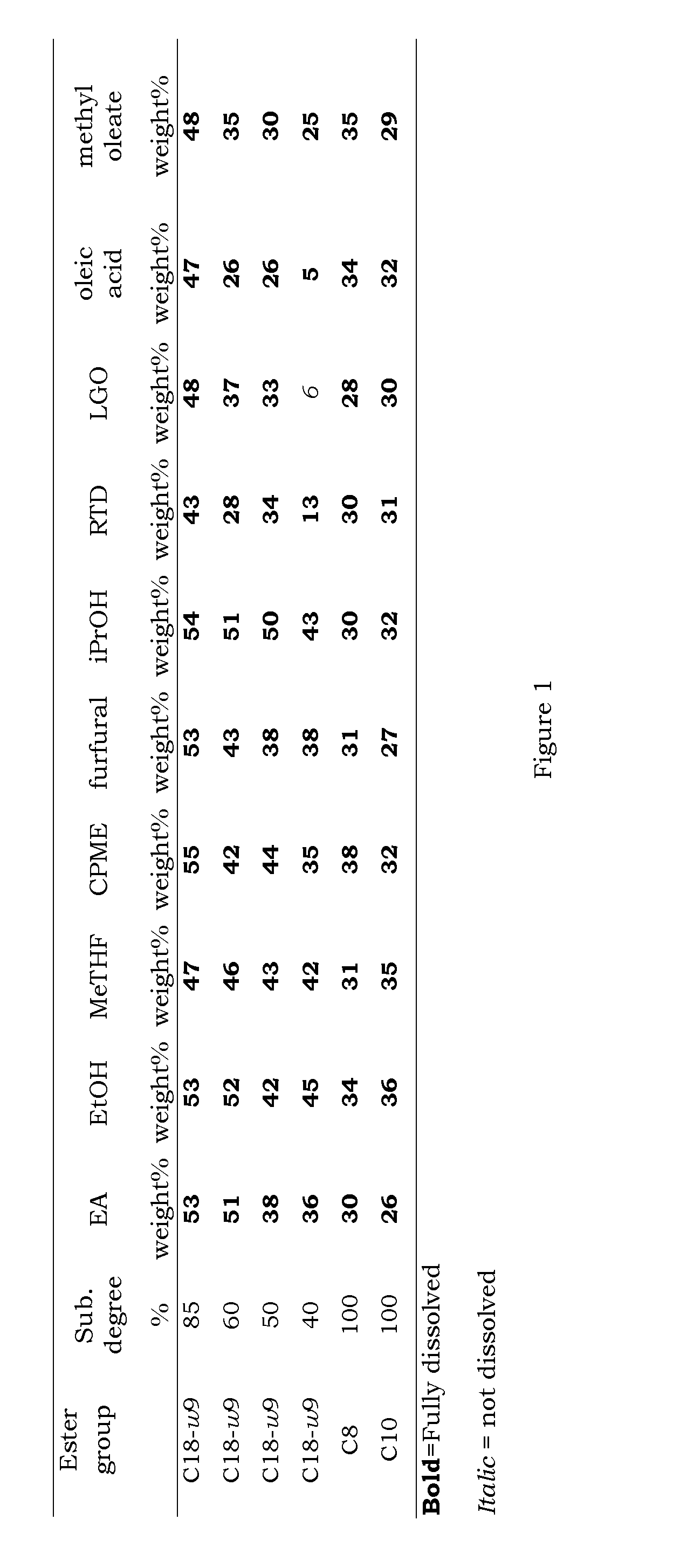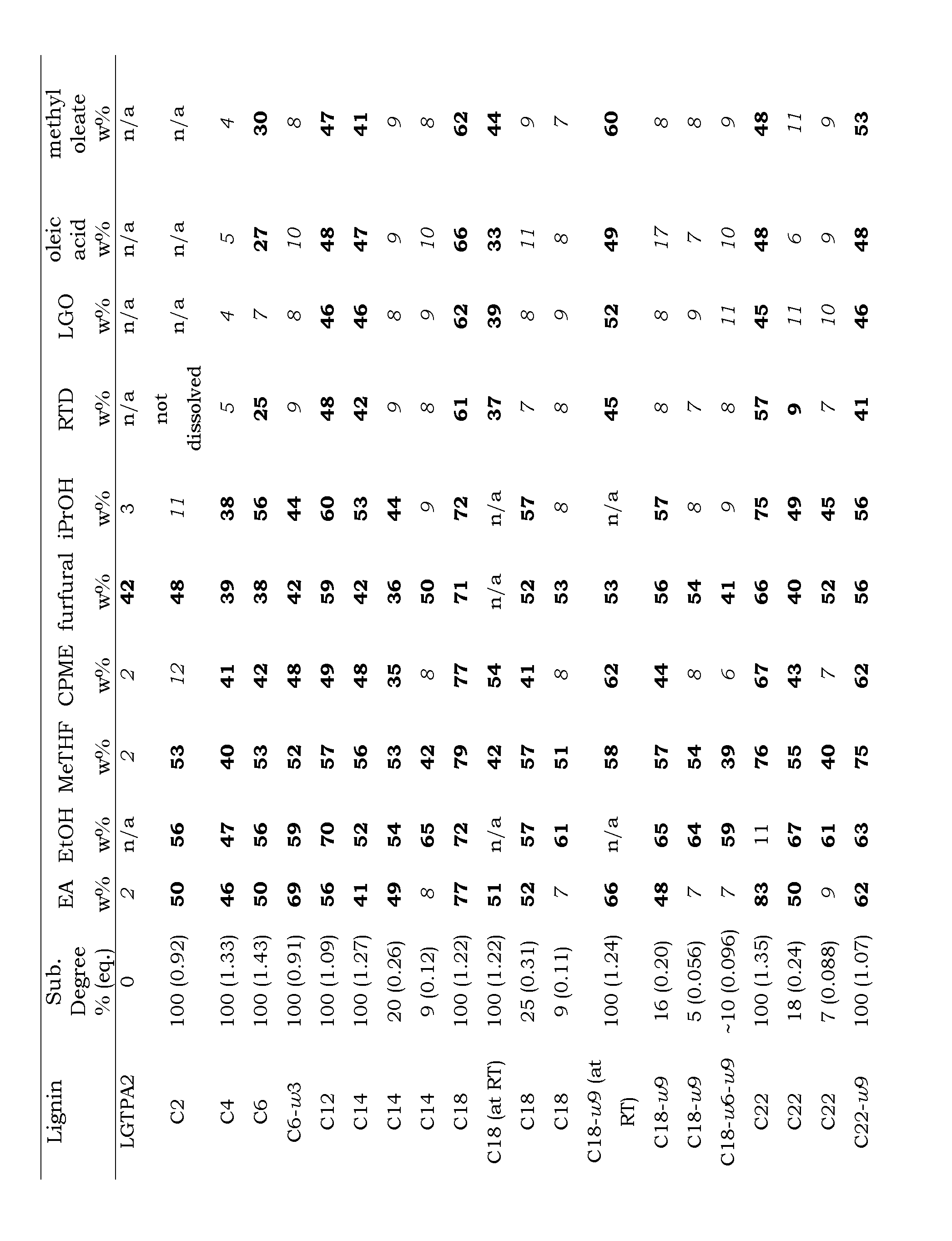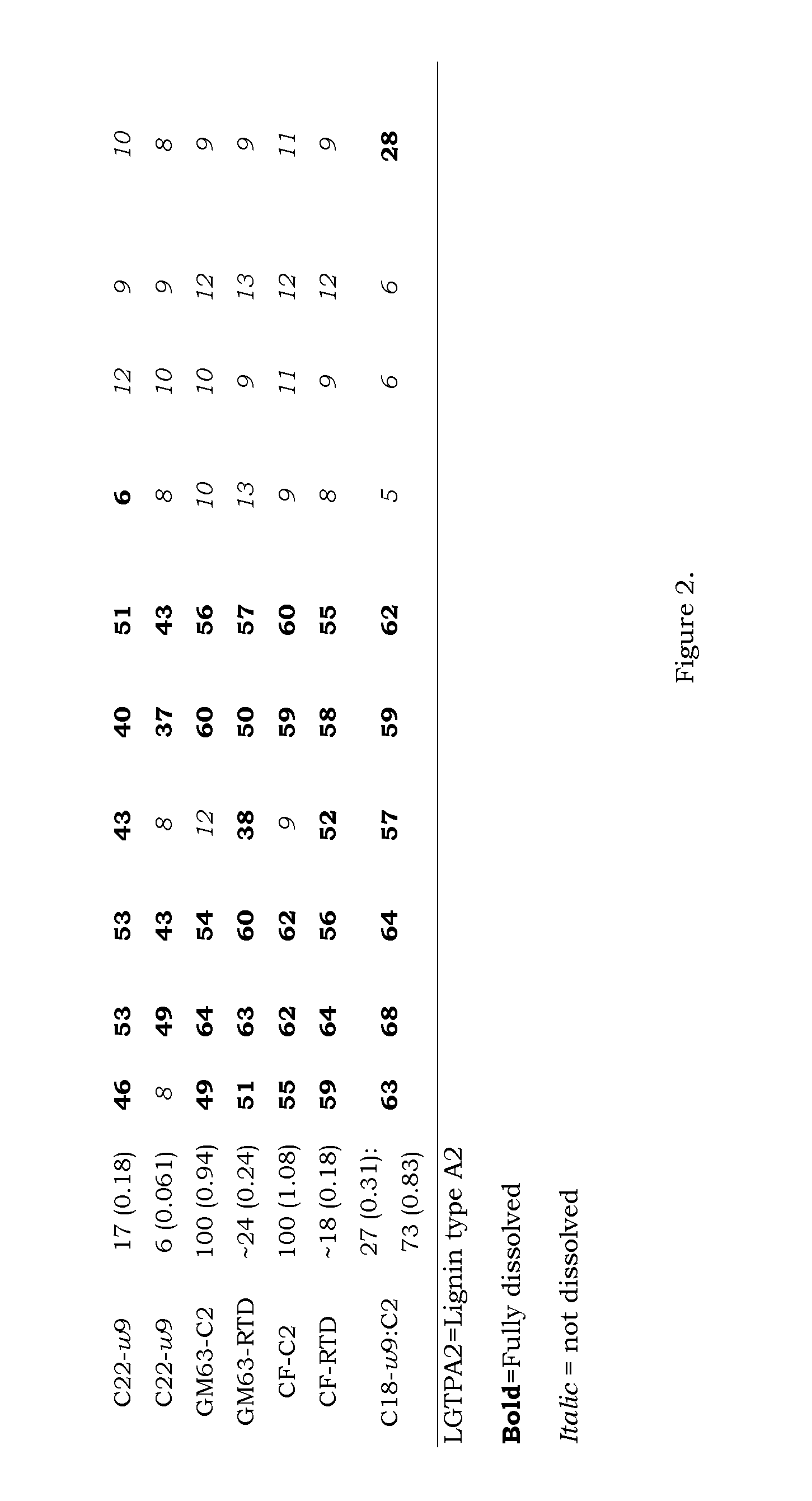Composition Comprising Esters Of Lignin And Oil Or Fatty Acids
- Summary
- Abstract
- Description
- Claims
- Application Information
AI Technical Summary
Benefits of technology
Problems solved by technology
Method used
Image
Examples
example 1
[0092]To a solution of ethyl acetate (0.1044 g) Lignin type A2-Ac-ester (0.1046 g) was added. The suspension was stirred under heating (70° C.). A pourable solution at 70 ° C. comprising 50 weight % of Lignin type A2-Ac-ester was attained.
example 2
[0093]To a solution of ethanol (0.0858 g) Lignin type A2-Ac-ester (0.1086 g) was added. The suspension was stirred under heating (70 ° C.). A pourable solution at 70 ° C. comprising 56 weight % of Lignin type A2-Ac-ester was attained.
example 3
[0094]To a solution of acetone (0.0592 g) Lignin type A2-Ac-ester (0.1012 g) was added. The suspension was stirred under heating (70 ° C.). A pourable solution at 70 ° C. comprising 63 weight % of Lignin type A2-Ac-ester was attained.
PUM
| Property | Measurement | Unit |
|---|---|---|
| Temperature | aaaaa | aaaaa |
| Fraction | aaaaa | aaaaa |
| Fraction | aaaaa | aaaaa |
Abstract
Description
Claims
Application Information
 Login to View More
Login to View More - R&D
- Intellectual Property
- Life Sciences
- Materials
- Tech Scout
- Unparalleled Data Quality
- Higher Quality Content
- 60% Fewer Hallucinations
Browse by: Latest US Patents, China's latest patents, Technical Efficacy Thesaurus, Application Domain, Technology Topic, Popular Technical Reports.
© 2025 PatSnap. All rights reserved.Legal|Privacy policy|Modern Slavery Act Transparency Statement|Sitemap|About US| Contact US: help@patsnap.com



